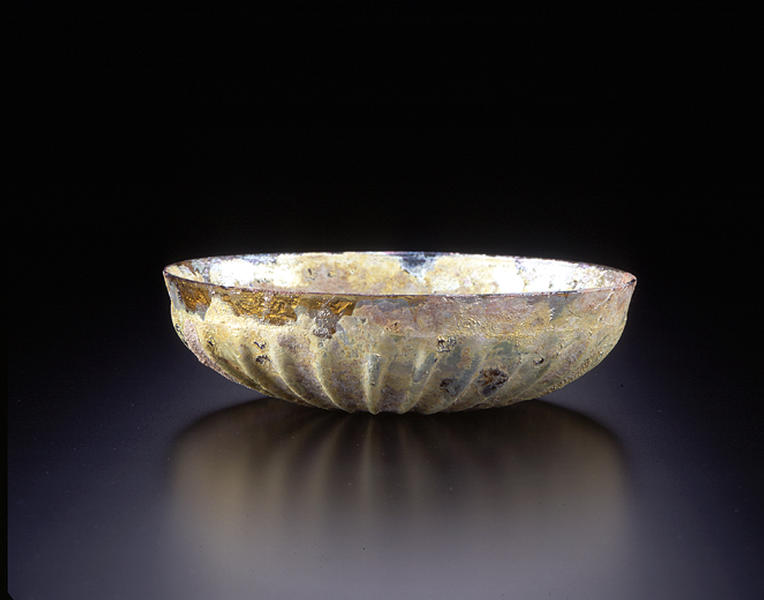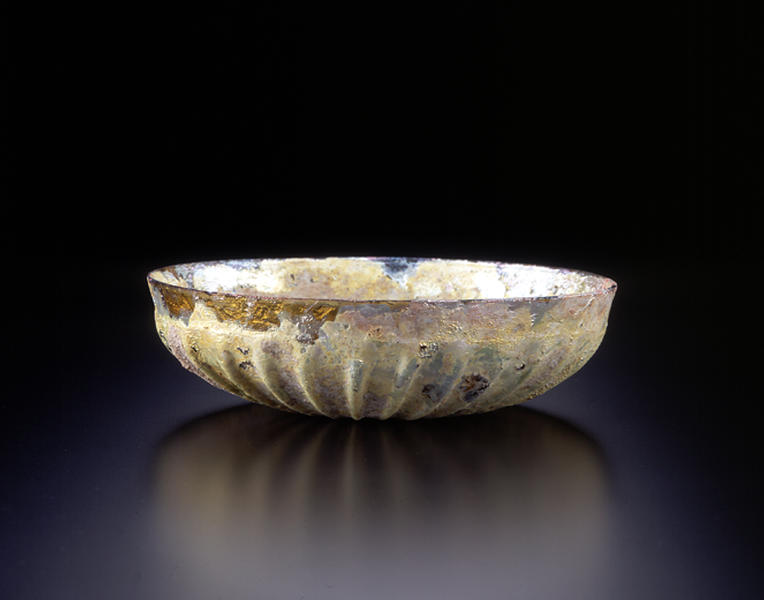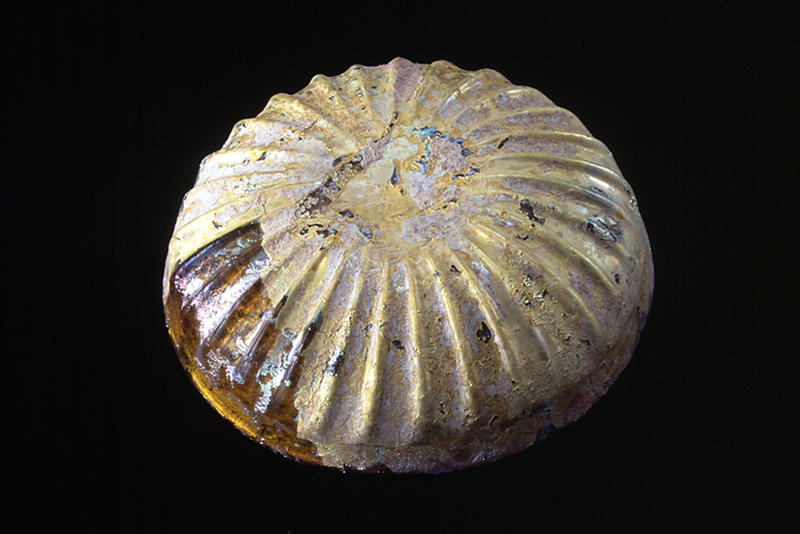Ribbed Bowl
- Eastern Mediterranean or Italy
- 1st century B.C. - 1st century A.D.
- Glass
- H-4.8 D-14.8
Catalogue Entry
Yellowish-brown translucent glass. The rim opens outward while the curved body walls flow in a smooth angle to the base. The center of the base has a slight hollow. One thin parallel groove is cut directly below the inner rim edge, while two grooves circle the outer edge of the base and one concentric groove is cut in the middle of the base Twenty-nine ribs have been formed on the bowl's exterior. These ribs are essentially the same size, relatively thick, and their raised surfaces are smooth. Both inner and outer surfaces have been completely covered with yellowish gold colored iridescence.
Catalogue Entry(Bac#042)
1st century B.C.‐1st century A.D.
Glass
(a)H. 5.5 cm, Mouth dia. 12.0 cm
(b)H. 4.8 cm, Mouth dia. 14.8 cm
cH. 4.2 cm, Mouth dia. 15.0 cm
Augustan Rome subjugated the Ptolemaic dynasty of Egypt and this brought free trade and commerce to the eastern Mediterranean region. Superb glass vessels spread throughout the Roman world, and this trade enlivened the Roman glass workshops and led to distinctive developments. This type of ribbed pattern glass bowl was made in great numbers in the early Imperial Roman Italian peninsula or in the Syrian/Palestine region. These bowls were made of single color, translucent glass.
There are various explanations of how these ribs were produced, with one explanation stating that a round mold with radiating ribs was heated and pressed into a soft lump of glass. Then this mold and pressed glass lump would be placed on top of a semi-spherical mold, heated again and allowed to drape over it, the rim is finished and the bowl is complete. Another idea is that a bowl-shaped mold with ribs was formed, then glass material was put into the mold, and then an inner mold was placed on top like a lid with a heavy rock. The whole configuration was the heated and formed, the rim and other details were carved and finished to complete the bowl. Before working with blown glass, the Roman glass workshops created superb works through these casting and "sagging" techniques.
Ribbed Bowl
Ribbed Bowl


